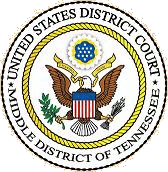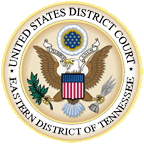Related Research Articles

The United States courts of appeals or circuit courts are the intermediate appellate courts of the United States federal judiciary. The courts are divided into 13 circuits, and each hears appeals from the district courts within its borders, or in some instances from other designated federal courts and administrative agencies. Appeals from the circuit courts are taken to the Supreme Court of the United States. The district, appellate, and Supreme courts are all authorized under Article Three of the United States Constitution, giving them the exclusive functions as constitutional courts.

The United States Court of Appeals for the Ninth Circuit is a federal court of appeals that has appellate jurisdiction over the district courts in the following districts:

The United States Court of Appeals for the Eighth Circuit is a United States federal court with appellate jurisdiction over the following United States district courts:

The United States Court of Appeals for the Second Circuit is one of the thirteen United States Courts of Appeals. Its territory comprises the states of Connecticut, New York, and Vermont. The court has appellate jurisdiction over the district courts in the following districts:
Circuit courts are court systems in several common law jurisdictions. The core concept of circuit courts requires judges to travel to different locales to ensure wide visibility and understanding of cases in a region. More generally, some modern circuit courts may also refer to a court that merely holds trials for cases of multiple locations in some rotation.

The Judiciary Act of 1789 was a United States federal statute adopted on September 24, 1789, in the first session of the First United States Congress. It established the federal judiciary of the United States. Article III, Section 1 of the Constitution prescribed that the "judicial power of the United States, shall be vested in one Supreme Court, and such inferior Courts" as Congress saw fit to establish. It made no provision for the composition or procedures of any of the courts, leaving this to Congress to decide.
The Midnight Judges Act represented an effort to solve an issue in the U.S. Supreme Court during the early 19th century. There was concern, beginning in 1789, about the system that required the Justices of the Supreme Court to "ride circuit" and reiterate decisions made in the appellate level courts. The Supreme Court Justices had often expressed concern and suggested that the judges of the Supreme and circuit courts be divided. The Act was repealed by Congress on January 22, 1802.
The United States circuit courts were the original intermediate level courts of the United States federal court system. They were established by the Judiciary Act of 1789. They had trial court jurisdiction over civil suits of diversity jurisdiction and major federal crimes. They also had appellate jurisdiction over the United States district courts. The Judiciary Act of 1891 transferred their appellate jurisdiction to the newly created United States circuit courts of appeals, which are now known as the United States courts of appeals. On January 1, 1912, the effective date of the Judicial Code of 1911, the circuit courts were abolished, with their remaining trial court jurisdiction transferred to the U.S. district courts.

The Judiciary Act of 1869, sometimes called the Circuit Judges Act of 1869, a United States statute, provided that the Supreme Court of the United States would consist of the chief justice of the United States and eight associate justices, established separate judgeships for the U.S. circuit courts, and for the first time included a provision allowing federal judges to retire without losing their salary. This is the most recent legislation altering the size of the Supreme Court.
The Judiciary Act of 1891, also known as the Evarts Act after its primary sponsor, Senator William M. Evarts, created the United States courts of appeals, and reassigned the jurisdiction of most routine appeals from the district and circuit courts to these appellate courts. Because of this, it is also called the Circuit Courts of Appeals Act.
The United States Judiciary Act of 1802 was a Federal statute, enacted on April 29, 1802, to reorganize the federal court system. It restored some elements of the Judiciary Act of 1801, which had been adopted by the Federalist majority in the previous Congress, but was repealed by the Democratic-Republican majority earlier in 1802.
Stuart v. Laird, 5 U.S. 299 (1803), was a case decided by United States Supreme Court notably a week after its famous decision in Marbury v. Madison.
The Judiciary Act of 1793 is a United States federal statute, enacted on March 2, 1793. It established a number of regulations related to court procedures.

The United States District Court for the Middle District of Tennessee is the federal trial court for most of Middle Tennessee. Based at the Estes Kefauver Federal Building and United States Courthouse in Nashville, it was created in 1839 when Congress added a third district to the state. Tennessee—along with Kentucky, Ohio, and Michigan—is located within the area covered by United States Court of Appeals for the Sixth Circuit, and appeals are taken to that court.

The United States District Court for the Eastern District of Tennessee is the federal court in the Sixth Circuit whose jurisdiction covers all of East Tennessee and a portion of Middle Tennessee. The court has jurisdiction over 41 counties with 4 divisions. Based in Knoxville, Tennessee, it maintains branch facilities in Chattanooga, Tennessee; Greeneville, Tennessee; and Winchester, Tennessee.
The Government of Guam (GovGuam) is a presidential representative democratic system, whereby the President is the head of state and the Governor is head of government, and of a multi-party system. Guam is an organized, unincorporated territory of the United States with policy relations between Guam and the US under the jurisdiction of the Office of Insular Affairs.
United States v. More, 7 U.S. 159 (1805), was a United States Supreme Court case in which the Court held that it had no jurisdiction to hear appeals from criminal cases in the circuit courts by writs of error. Relying on the Exceptions Clause, More held that Congress's enumerated grants of appellate jurisdiction to the Court operated as an exercise of Congress's power to eliminate all other forms of appellate jurisdiction.
Circuit riding was one of the responsibilities of U.S. Supreme Court justices during the Marshall Court (1801–1835). Under the Judiciary Act of 1801, the United States federal judicial districts were divided into six United States circuit courts—one for each justice. Rather than appointing separate circuit judges, the circuit courts were staffed by a combination of the resident United States district court judges from that district and the Supreme Court justice assigned to that circuit.
The Judicial Code of 1911 abolished the United States circuit courts and transferred their trial jurisdiction to the U.S. district courts.

A certificate of division was a source of appellate jurisdiction from the circuit courts to the Supreme Court of the United States from 1802 to 1911. Created by the Judiciary Act of 1802, the certification procedure was available only where the circuit court sat with a full panel of two: both the resident district judge and the circuit-riding Supreme Court justice. As Chief Justice John Marshall wrote, he did not have "the privilege of dividing the court when alone."
References
- 1 2 3 "Circuit Riding". fjc.gov. Federal Judicial Center . Retrieved 17 May 2019.
Under the practice known as "circuit riding," each justice was assigned to one of three geographical circuits and traveled to the designated meeting places within the districts of that circuit.
- ↑ "Circuit riding". britannica.com. Encyclopedia Britannica . Retrieved 17 May 2019.
The practice was largely abandoned with the establishment of permanent courthouses and laws requiring parties to appear before a sitting judge.
- ↑ "Judges on Horseback" (PDF). The Historical Society of the United States Courts in the Eighth Circuit. Archived (PDF) from the original on 2 November 2020. Retrieved 18 January 2021.
| | This United States government–related article is a stub. You can help Wikipedia by expanding it. |